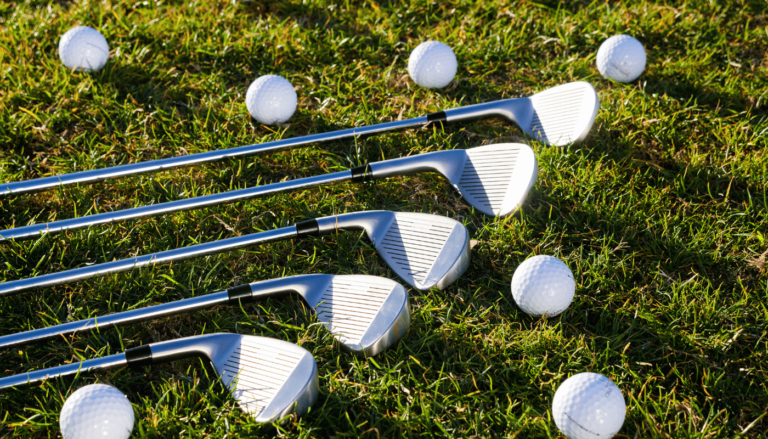Master Your Swing: How to Use Golf Training Mat Effectively
Embarking on the journey to refine your golf skills can often lead you down the path of numerous training aids, one of which is the golf training mat. This essential tool, often overlooked, can be the cornerstone of improving your swing, accuracy, and overall game. Whether you’re a seasoned golfer or just starting out, understanding how to effectively use a golf training mat can transform your practice sessions. Dive into the nuances of maximizing your training with this simple yet powerful tool.
Choosing the Right Golf Training Mat
Deciding on the perfect golf training mat is pivotal in enhancing your game from the comfort of your own space. The right mat can make a significant difference in the realism of your practice, closely simulating the conditions of your favorite golf course. When considering a purchase, evaluate the mat’s material quality, which influences both durability and the realistic feel of the turf. High-quality mats are designed to mimic the fairway’s resistance, providing feedback accurate to real-world scenarios.
Moreover, size and portability matter. For those with limited space or who wish to take their practice setups on the go, compact, easy-to-store mats are ideal. However, ensure that the mat is large enough to not only accommodate your stance but also to allow for a variety of shots. A versatile mat should offer different lie options such as fairway, rough, and tee box conditions to prepare you for any situation on the course. Lastly, look for mats with features that aid in practice efficiency, such as ball return systems or alignment guides, to maximize your training sessions.
Remember, the goal of a training mat is not just to protect your lawn but to provide a consistent, reliable surface that improves your game. Pay attention to user reviews and product warranties as indicators of quality and durability. Investing in the right golf training mat is an investment in your golfing journey, offering a payoff in lowered handicaps and more enjoyable rounds.
- Material quality and turf realism
- Size and portability for convenient storage
- Versatility in lie options (fairway, rough, tee box)
- Features for practice efficiency (e.g., alignment guides)
- User reviews and product warranties as quality indicators
In the quest for the ideal golf training mat, understanding your specific needs and how each mat’s features align with those needs is crucial. Whether you are a beginner looking to establish a consistent practice routine or an experienced golfer aiming to refine your skills, the right mat can be a game-changer. By prioritizing material quality, versatility, and additional features that enhance practice, you can select a mat that not only withstands the rigors of frequent use but also effectively simulates the experience of playing on a real golf course. Thus, carefully choosing a golf training mat is a step towards achieving your golfing goals, making each practice session both productive and enjoyable.
Setting Up Your Training Space
Creating an effective training space is a cornerstone for enhancing your golf swing using a golf training mat. The right environment can significantly influence your practice sessions, making them more productive and enjoyable. First and foremost, the area should be spacious enough to allow for a full swing without any hindrances. This means having a clear zone above and around you, ensuring that your club won’t hit ceilings, walls, or any nearby objects.
The surface on which you place your golf training mat is equally important. Ideally, it should be flat and stable to prevent any shifting during your swing. Uneven surfaces can lead to improper stance and balance, affecting the accuracy and power of your swing. Lighting is another critical factor; natural light is preferred for daytime practice, but if that’s not feasible, ensure the space is well-lit to avoid shadows that could distort your perception of the swing path. Lastly, consider the acoustics of your training area. The sound of the club hitting the mat can provide valuable feedback on your swing technique, so a space that doesn’t absorb sound too much is preferable.
To enhance your training space further, integrating a few essential items can make a significant difference:
- A high-quality, durable golf training mat that simulates the feel of real turf.
- A net or screen to safely catch balls when practicing full swings.
- Ample room behind the mat for video equipment or mirrors for swing analysis.
- Comfortable, non-slip flooring to ensure safety and stability during swings.
- Proper storage for golf clubs and training aids to keep the area organized and clutter-free.
Setting up your training space with attention to detail can transform your practice sessions, making them more efficient and focused. By creating a dedicated area for your golf training mat, you’ll be able to practice consistently, regardless of the weather or time of day, leading to steady improvement in your game.
Mastering Your Stance and Posture
Perfecting your stance and posture is foundational to enhancing your golf swing. When using a golf training mat, it’s crucial to position your body correctly to simulate a real golf course experience. The first step is ensuring your feet are shoulder-width apart, providing a stable base for your swing. This stance aids in balancing your weight evenly across both feet. Additionally, your knees should be slightly bent, and your torso should lean forward from the hips, keeping your back straight. This position allows for optimal flexibility and range of motion during the swing.
Another key aspect is the alignment of your feet, which should be parallel to the target line. This alignment is crucial as it influences the direction of your swing and ultimately the flight path of the ball. A common mistake golfers make is neglecting their alignment on the training mat, leading to inaccuracies on the course. Furthermore, maintaining a consistent posture throughout your practice on the training mat helps in developing muscle memory. Over time, this consistency translates into a more stable and powerful swing on the actual course.
Lastly, it is essential to keep your head still and your eyes focused on the ball. This concentration aids in achieving a precise hit. Incorporating these techniques into your routine on the golf training mat will significantly improve your stance and posture, laying a solid foundation for a successful golf swing.
| Component | Description | Importance |
|---|---|---|
| Feet Position | Shoulder-width apart | Provides stability |
| Knees | Slightly bent | Increases flexibility |
| Torso | Leans forward, back straight | Enhances range of motion |
| Alignment | Feet parallel to target line | Affects swing direction |
| Head and Eyes | Still, focusing on the ball | Improves precision |
Enhancing Muscle Memory through Repetition
Consistency in your stance and posture during practice sessions on a golf training mat is not just about maintaining form but also about building muscle memory. The more you repeat a movement with the correct alignment and posture, the more ingrained it becomes in your muscles. This repetition ensures that when you’re on the course, your body automatically aligns itself in the optimal position for a swing, reducing the need for conscious adjustments and allowing for a more focused and efficient game. Practicing with intent on a training mat is a step towards achieving unconscious competence in your golf swing.
Drills for Improved Swing Technique
Improving your golf swing technique is essential for lowering your scores and getting more enjoyment out of your golf game. Using a golf training mat effectively can drastically improve your swing technique, but it requires the right drills and a consistent practice schedule. Here, we will explore several drills designed to enhance different aspects of your swing, utilizing the feedback and consistency that a training mat provides.
First, focus on your stance and balance. A common drill is the feet-together swing, which forces you to maintain balance throughout the swing, improving your control and encouraging a more centered hit. Another effective drill involves practicing your swing in slow motion, allowing you to feel every part of the swing and identify any issues with your technique. This drill is particularly effective on a training mat, as the mat’s feedback will help you understand the quality of your contact with the “ground.”
Next, concentrate on the path of your swing. Utilize the alignment guides that many training mats offer to ensure your swing follows the correct path. An excellent drill for this is the gate drill, where you place two objects on the mat to create a “gate” that your club must pass through. This drill helps in correcting both inside-to-out and outside-to-in swing paths, promoting a straighter, more efficient golf swing.
Focusing on Follow-Through and Finish
The end of your swing is just as important as the beginning. For a well-rounded swing technique, practice drills that emphasize a full follow-through and a balanced finish. One such drill involves swinging and then holding your finish for a count of three, ensuring you’re in a stable and balanced position. This not only improves balance but also ingrains a sense of rhythm and flow into your swing.
Integrating Precision and Power
While technique is pivotal, integrating precision with power in your swing can significantly enhance your game. Practice drills that require you to hit targets at varying distances to fine-tune your control and power distribution. This approach, combined with the consistency of practicing on a training mat, can lead to substantial improvements in your swing technique.
- Feet-together swing drill for improved balance
- Slow motion swings to enhance technique awareness
- Gate drill for correcting swing path
- Swing and hold to emphasize a balanced finish
- Targeted hitting for precision and power integration
By incorporating these drills into your practice routine on a golf training mat, you’ll not only see improvements in your swing technique but also in your overall game performance. Remember, consistency is key, and regular practice will yield the best results. Whether you’re a beginner looking to establish a solid foundation or an experienced golfer aiming to refine your swing, these drills can provide the pathway to achieving your golfing goals.
Analyzing and Adjusting Your Practice
Perfecting your golf swing is an art that requires patience, precision, and practice. Utilizing a golf training mat is an excellent way to refine your skills, but the true key to improvement lies in effectively analyzing and adjusting your practice routine. The goal is not just to hit the ball but to understand the mechanics of your swing, the impact of your stance, and the direction of your follow-through.
Every golf swing is a combination of complex body movements involving balance, timing, and power. By recording your practice sessions, you can visually critique your swing, stance, and ball trajectory. This analysis allows you to identify specific areas for improvement such as the angle of attack, the consistency of your swing path, and the timing of your release. Remember, the smallest adjustments can lead to significant improvements in your overall game.
Adjustments should be deliberate and focused. For instance, if you notice that your shots are consistently veering to the right, this could indicate an open clubface at impact. In response, you might adjust your grip or work on your wrist positioning during the swing. Moreover, leveraging the feedback from a golf training mat equipped with sensors can provide quantitative data to further fine-tune your technique. This data-driven approach ensures that your adjustments are not just based on feel but backed by concrete metrics.
Here is a table illustrating potential areas of focus during practice sessions and adjustments you might consider:
| Issue Identified | Possible Cause | Suggested Adjustment |
|---|---|---|
| Inconsistent Swing Path | Improper alignment or stance | Realign stance or adjust foot positioning |
| Shots veering to the right | Open clubface at impact | Adjust grip strength or wrist positioning |
| Lack of distance | Insufficient power transfer | Focus on hip rotation and weight transfer |
| High Shot Trajectory | Too steep of an attack angle | Flatten swing plane slightly |
| Low Shot Trajectory | Too shallow of an attack angle | Increase swing plane angle |
Successfully analyzing and adjusting your practice on a golf training mat requires a blend of self-awareness, technical knowledge, and adaptability. Each practice session presents an opportunity to learn more about your game and make the necessary adjustments. Over time, these incremental improvements will compound, leading to a more efficient, reliable, and powerful golf swing.
Understanding the intricacies of your golf swing is a journey that takes dedication and time. The process of analyzing and adjusting your practice is critical to mastering the art of golf. By embracing this approach, you equip yourself with the tools needed for continuous improvement. Remember, the path to excellence is paved with the stones of persistence, analysis, and adjustment. Keep striving for precision on every swing, and let the journey refine not just your game, but your character as a golfer.
In conclusion, the effective use of a golf training mat goes beyond mere repetition. It’s about leveraging technology and insights to make smarter, data-driven adjustments to your practice routine. By focusing on analyzing and adjusting your practice, you are not just practicing; you are evolving your game. Embrace this journey with patience and perseverance, and watch as your golf swing transforms from good to great.





